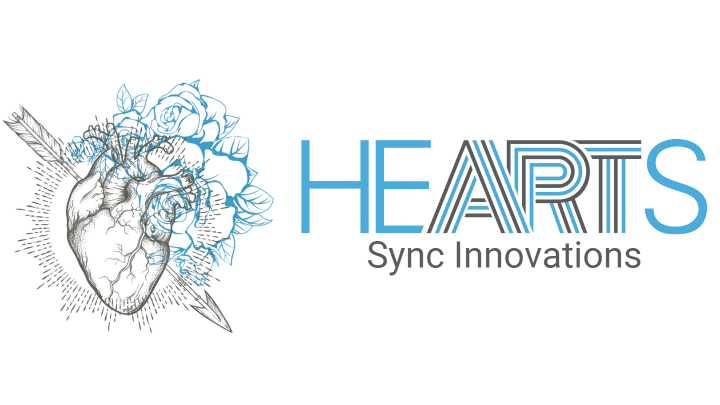The widespread myth: To achieve peak performance, one must always be online – every notification, every feed, every message in real-time. The data shows the opposite. Just a week-long social media break measurably improves well-being and reduces symptoms of depression and anxiety, even without further interventions [1]. And a moderate limit instead of complete abstinence can enhance sleep and life satisfaction – both direct drivers of performance [2] [3].
Digital silence refers to conscious phases without social media and with reduced screen time, during which the cognitive influx of stimuli is absent. It protects against cognitive overloadtoo many simultaneous stimuli that overwhelm working memory and attention and stabilizes the Default Mode Networkbrain network for self-reflection and creative integration, which links ideas when no input is bombarding us. A common side effect of constant screens is "Computer Vision Syndrome" (CVS), also known as Digital Eye Straindigital-related eye strain characterized by dryness, burning, and blurred vision, caused by infrequent blinking, suboptimal lighting, and inflammatory stimuli [4] [5] [6]. For high performers, this means: those who schedule recovery for attention systems and eyes regain focus, visual endurance, and mental energy.
Short social media detoxes reduce psychological stress and increase subjective well-being – effects that directly contribute to concentration, decision quality, and recovery [1] [2] [3]. Improved sleep is a central lever: less late-night feed consumption correlates with better sleep quality, which in turn stabilizes mood and daytime energy [2]. Simultaneously, digital silence addresses physical complaints. Prolonged staring at screens decreases blink frequency, dries out the eye surface, and promotes inflammation – typical drivers of CVS, associated with headaches and neck pain as well as blurred vision [4] [5] [6]. Those who cyclically reduce this sensory load and ergonomically counteract it experience clearer vision, less fatigue, and more consistent performance throughout the day.
In a randomized study, a complete one-week abstinence from Facebook, Instagram, Twitter, and TikTok led to noticeable improvements in well-being and lower symptoms of depression and anxiety compared to a "keep going" group; the effect was partly associated with spending fewer minutes in the apps overall, especially on Twitter and TikTok [1]. A second study allowed participants to consciously limit their social media usage for a week and found small but robust gains in well-being, partly mediated by better sleep quality – a practically relevant mechanism for daily focus and emotional stability [2]. Additionally, a two-week detox limiting screen time to 30 minutes per day among young adults showed improvements in symptoms of smartphone and social media addiction, sleep, life satisfaction, stress, and perceived overall well-being; interviews described a "Goldilocks" experience: neither none nor excess, but a suitable measure [3]. Furthermore, review articles on Computer Vision Syndrome document that persistent screen usage mechanistically burdens the eye surface through reduced blinking, light emission, and inflammation, thus triggering visual as well as musculoskeletal complaints – a widespread, well-treatable phenomenon in daily digital life [4] [5] [6].
- Plan one "offline day" per week without social media. Use it for deep work, training, or time in nature. Studies show that just a week of pause increases well-being and lowers negative mood [1].
- Alternatively: Set a daily limit of 30 minutes on social media for two weeks. This reduces stress perception, improves sleep, and increases life satisfaction; at the same time, app dependency decreases [3].
- For beginners: Consciously limit social media for a week (e.g., 2×15 minutes/day) and avoid late-night scrolling. Part of the well-being gain comes from better sleep quality [2].
- Component “Eye Health”: Implement the 20-20-20 rule (every 20 minutes, look at something 20 feet away for 20 seconds), increase blink rate consciously, and reduce glare. This addresses central mechanisms of Computer Vision Syndrome [4] [5] [6].
- Micro-rituals for digital silence: Turn off push notifications, clear your home screen, and bundle apps into time slots (time windows instead of continuous streams). This reduces total usage minutes – the mediator of psychological effects [1].
Digital silence is not a retreat but a performance tool: less sensory overload, better sleep, clearer eyes – more focus. Start this week with an offline day or a 30-minute limit, combine it with the 20-20-20 rule for your eyes, and measure your daily energy. Small doses of silence, great impact.
This health article was created with AI support and is intended to help people access current scientific health knowledge. It contributes to the democratization of science – however, it does not replace professional medical advice and may present individual details in a simplified or slightly inaccurate manner due to AI-generated content. HEARTPORT and its affiliates assume no liability for the accuracy, completeness, or applicability of the information provided.













